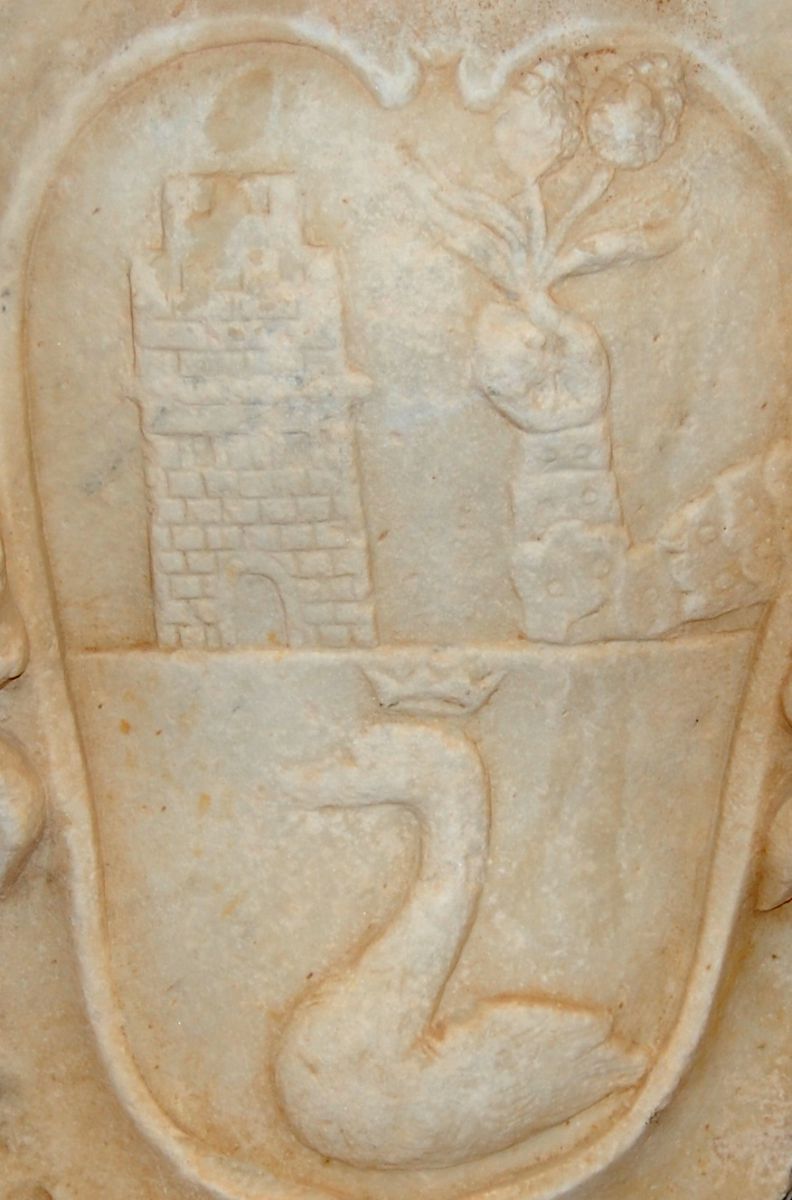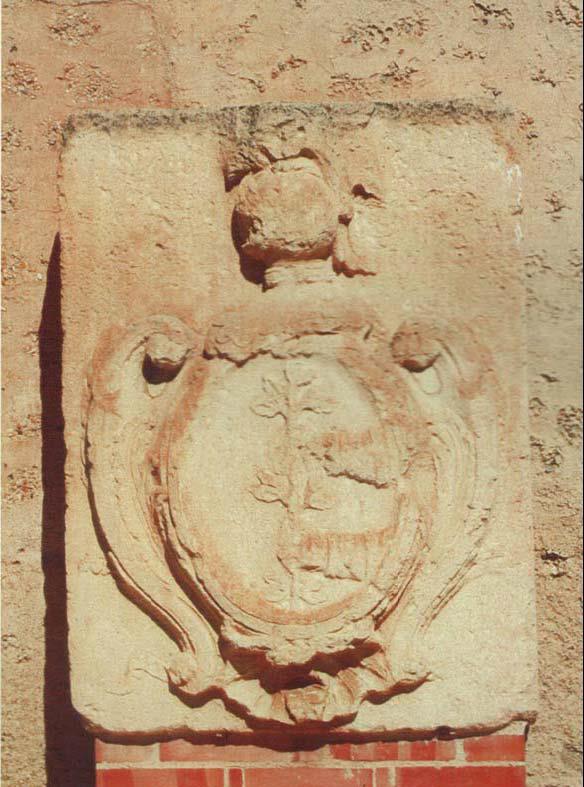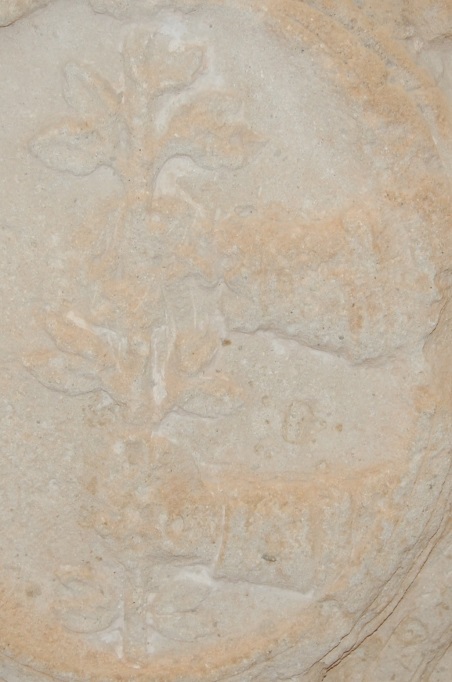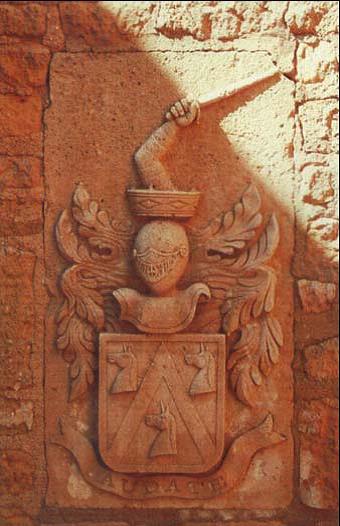PIECE OF THE MONTH. Heraldic coat of arms

| GENIILICIO HERALDIC COAT OF ARMS
Modern/Contemporary Marble CS 7208
|
This heraldic piece forms part of the historical heritage collection of the Diputación de Alicante, although it is not known how it was acquired. It is currently on display in the Hall of Coats of Arms of the Castle of Santa Bárbara, as in 1969 the Alicante City Council requested that three coats of arms (including the one we are talking about) and a commemorative tombstone be ceded to the Alicante Provincial Council. On 7th April 1972, the documents of cession were finally signed, and the requested pieces were handed over. Although it is in a good state of conservation, the helmet and lambrequins show erosions.
The oval shield, made in an undetermined place in Europe, is sculpted on an oval block of white marble by carving, chiselling and polishing. It is located inside a cornucopia, on which rests a helmet or helmet front with feathers, plumes or lambrequins and an open helmet, with baroque scrolls encircling the sides. The shield itself is cut into two quarters.
The first, located in the upper part, depicts, on the left, a crenellated tower with a closed door and three windows; on the right, an armed arm whose hand carries a bouquet of three branches and leaves. In the second, lower quarter, a crowned Swan or Goose, swimming on water.
This coat of arms could belong to a noble family from Alicante, descendant of the PARAVICINO or PARAVICINI. This lineage, from the city of Como, in the state of Milan, in Italy, moved to Genoa, where it was divided into various noble branches.
The first of this surname to found a house in Alicante was GABRIEL PARAVICINO, born in Como, married to CATALINA DE LA PORTA, also from Como. Their son JUAN BAUTISTA PARAVICINO Y DE LA PORTA, was born in Milan, but he was the first to come and marry in Alicante, in the Parish of Santa María in 1597, with MARGARITA BELDA, a native of Bocairente, in the province of Alicante. Juan Bautista Paravecino was granted the title of nobleman by the King, and placed in the knightly estate.
Their son, JOSÉ FRANCISCO PARAVICINO Y BELDA, was born in Alicante and was baptised in the Collegiate Church of San Nicolás in 1582. He married VIOLANTE FRANCISCA PASQUAL Y PASQUAL, born in Muchamiel and daughter of Jaime Pascual, Magnificent and Agueda.
The best known of this family was the son of the previous ones, JUAN BAUTISTA PARAVICINO Y PASQUAL, born in Alicante and baptised in Santa María in 1615. He was Justice of Alicante in 1647 and Jurado in 1657 and 1661. He first married ANA MARÍA DOMÍNGUEZ Y CULLA, and then ISABEL JUAN Y PASQUAL DEL POBIL, born in Novelda.
His nephew, JOSÉ FRANCISCO PARAVICINO Y MARTÍNEZ DE FRESNEDA, born in Alicante and baptised in Santa María in 1652, was a member of the first Bourbon City Council of Alicante in 1709.
He married MARGARITA JUAN Y CANICIA, daughter of Cipriano Juan y Pasqual del Pobil and Ana María Canicia y Pasqual; and sister of Bernardo, father of the sailor and scientist Jorge Juan y Santacilia, in the aforementioned church in the year 1694 (MORELLA, 1956: 45).
For the study of this piece, the knowledge provided by Heraldry, an auxiliary science of History, is essential. Through the description and study of the symbols reflected in the coat of arms, it allows us to identify the holder of the arms in question. Arms that will accompany the surname through time and geographical space.
If the difficulty in the municipal coats of arms lies in knowing which are the real arms, as there are many arbitrary names, in the case of the gentilics, the difficulty arises when trying to identify the owners of the coats of arms. Many have disappeared as families, others have ceased to reside in these parts and only the memory or the toponym that gives the name to the place, house, plot or estate remains.
Like the coat of arms in question, there are many others, from the 17th, 18th and 19th centuries, also from noble families of foreign origin who settled in Spain, in this case, in the province of Alicante, such as the coat of arms of the MARBEUF family, a foreign family, but settled in Alicante and which according to a file kept in the Municipal Archives of Alicante was granted the privilege of nobility on 27 September 1740 to D. Fco. Fco. Marbeuf and his male descendants.
Another case is the coat of arms of the ALEMÁN family which, as it does not appear in the Alicante nobiliary prior to the 18th century, it is possible that it was a title incorporated from that time onwards in Alicante.

This coat of arms of the Alemán family was another of those that entered the historical and patrimonial funds of the Diputación de Alicante, together with the coat of arms of the Paravesino family.
In addition, this coat of arms also has another characteristic similar to the one that is the subject of this card, as it shows an arm with a closed hand holding a branch with several leaves that are difficult to identify (laurel?).


The following coat of arms also belongs to a surname from IRELAND. It is known that a member of this surname moved to Alicante at the end of the 18th century, where he settled and had many descendants who were related to different families of the Alicante nobility.
Finally, it is curious to note that, just as the coat of arms of the PARAVESINO family depicts a swan swimming on water, there is also this decorative symbol full of meaning in other coats of arms. For example, the coat of arms of the BRIONES family has two geese, but in different quarters, and shares them with two other quarters with castles.
A very similar coat of arms to that of the Briones is that of RIERA. On the other hand, the CASTILLO family has a single goose in its coat of arms, but with two other quarters or a heron is what appears in the coat of arms of the SÁNCHEZ family.
The COLOMA family, along with many other elements, also has two geese in its coat of arms. Another heron appears in the coat of arms of the GARCÍA family.
BIBLIOGRAPHY
- MARTÍNEZ MORELLA, V., Lineages and coats of arms of the city of AlicanteAlicante, 1956.
- PANTOJA ROMERO, A; BOLUDA AMAT, C, "Cataloguing and study of the heraldic coats of arms of the L'Alancantí region.". Ayudas a la Investigación, Instituto de Cultura Juan Gil-Albert, 1986-87 pp. 217-231.
- PARDO DE GUEVARA, E. Manual of Spanish Heraldry. Madrid, 1987.

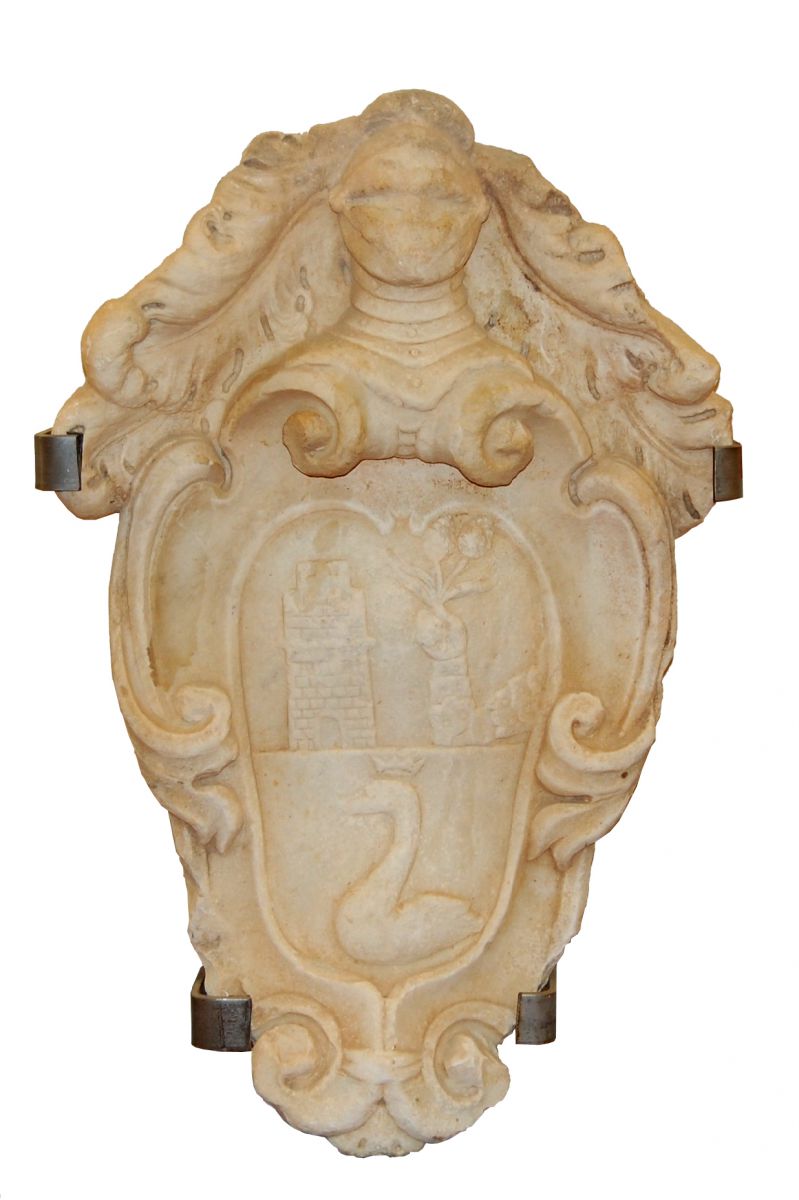
.jpg)
